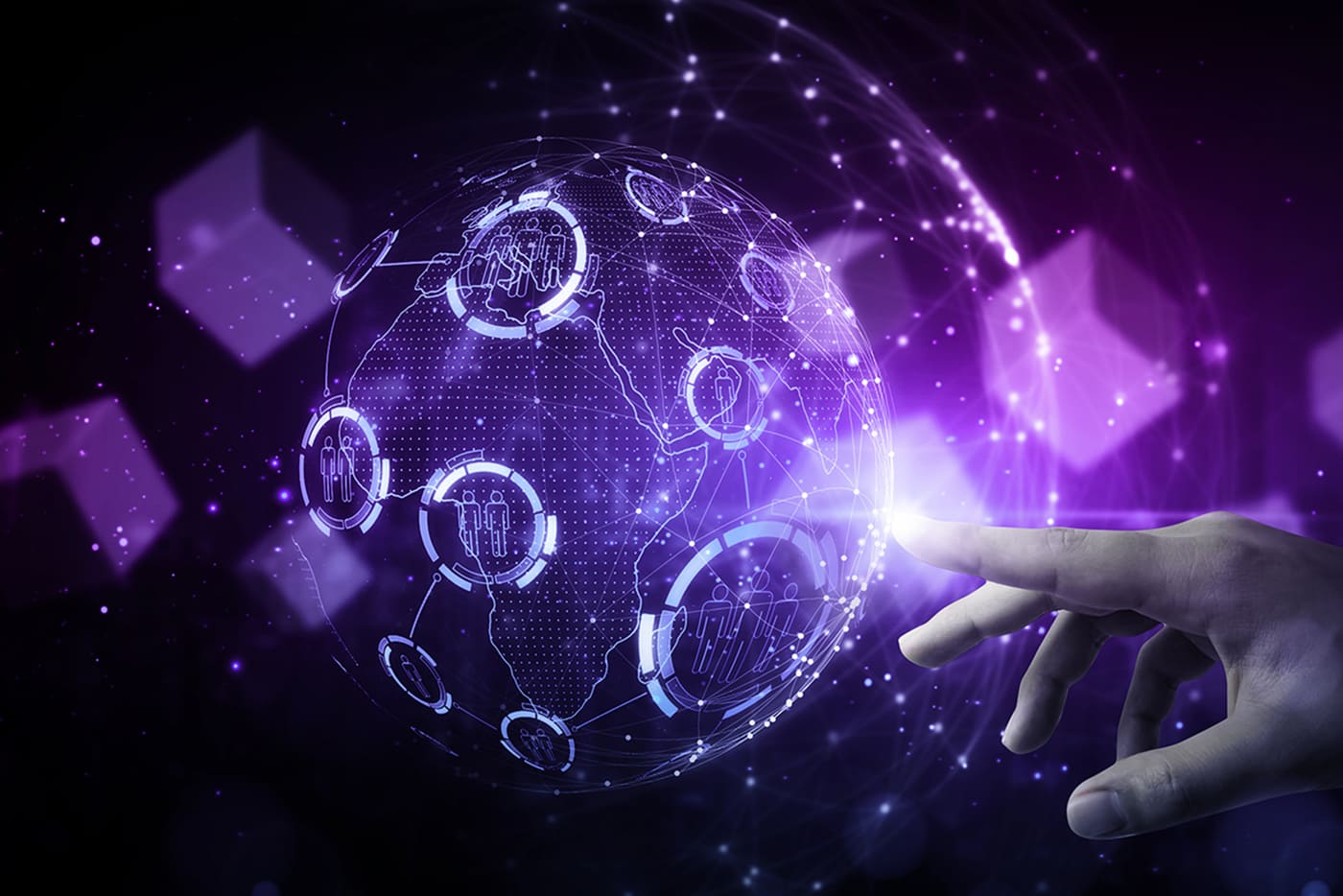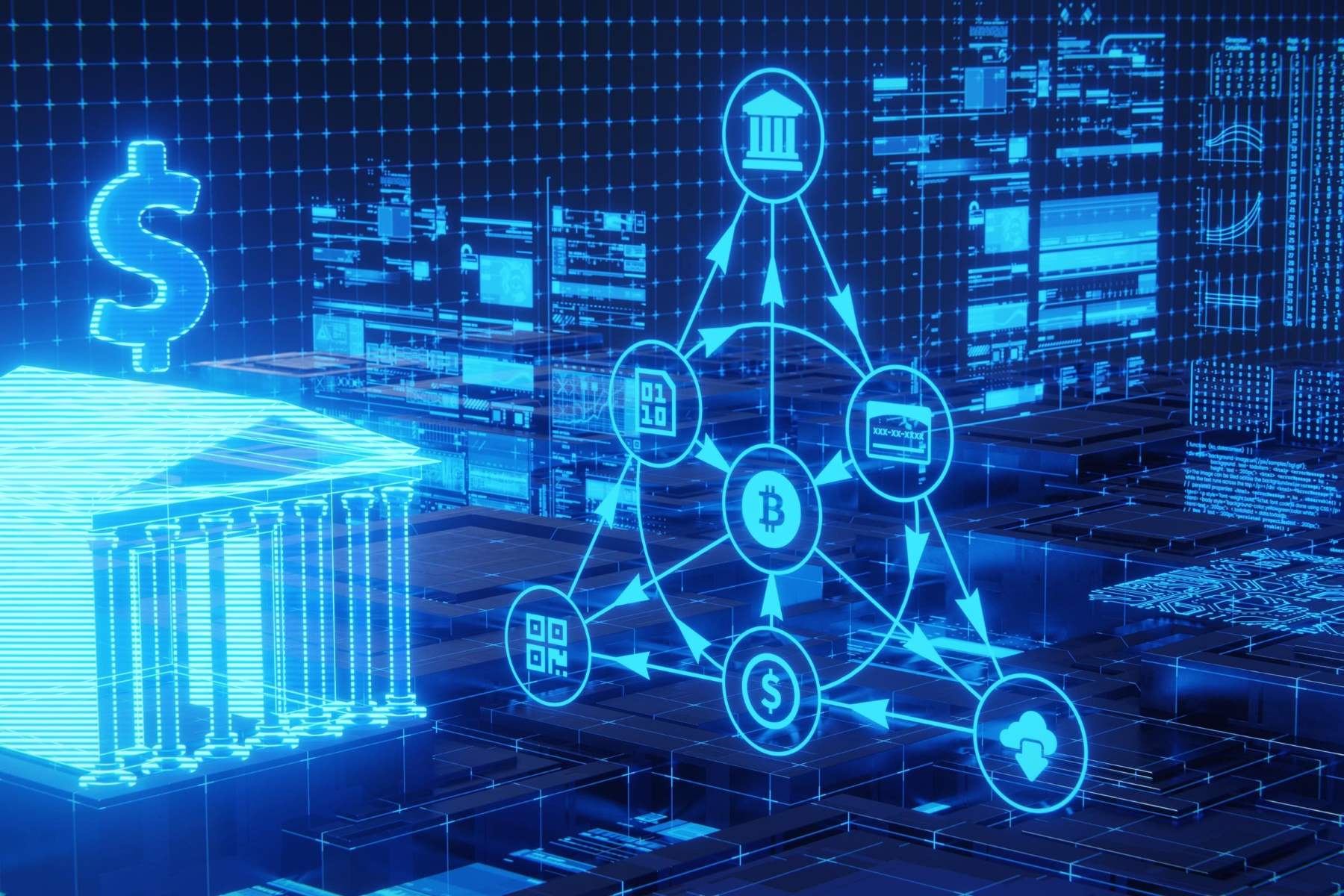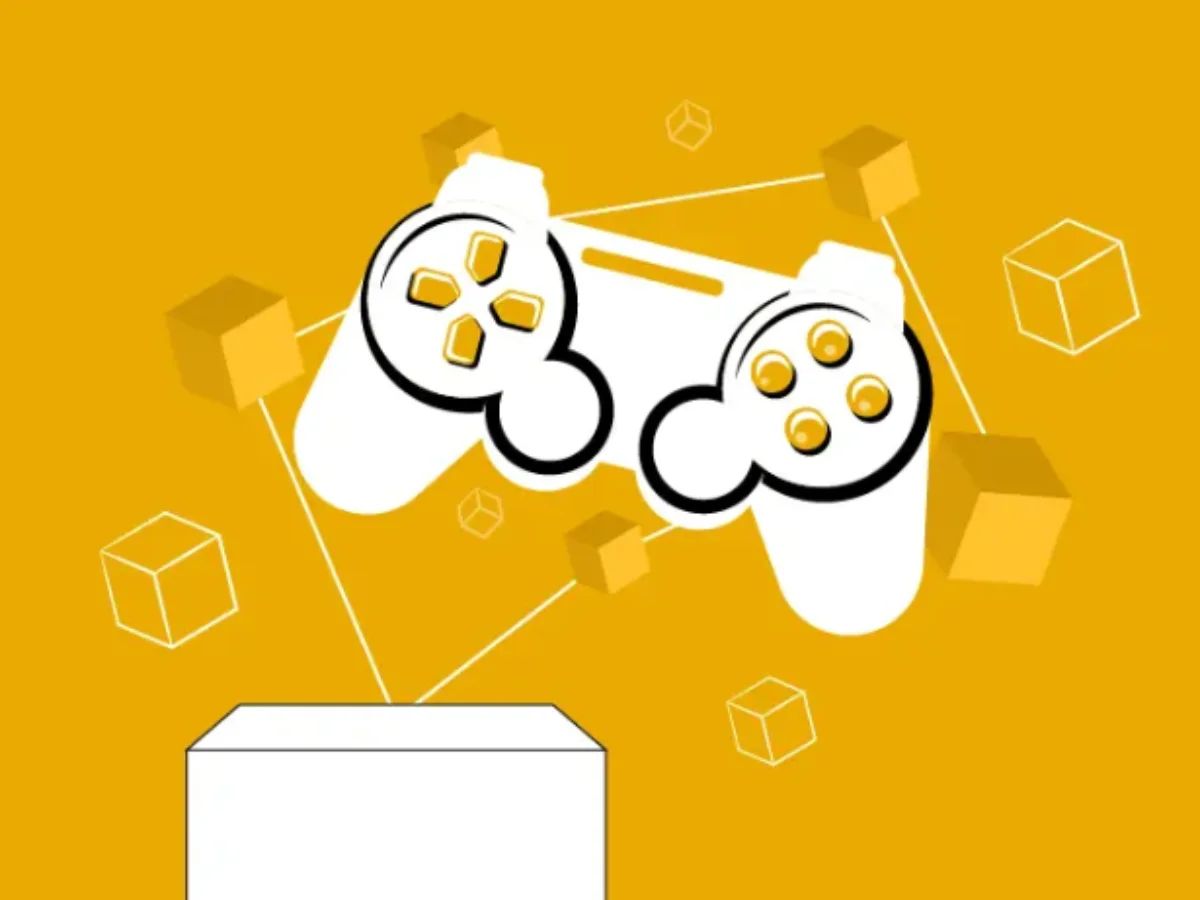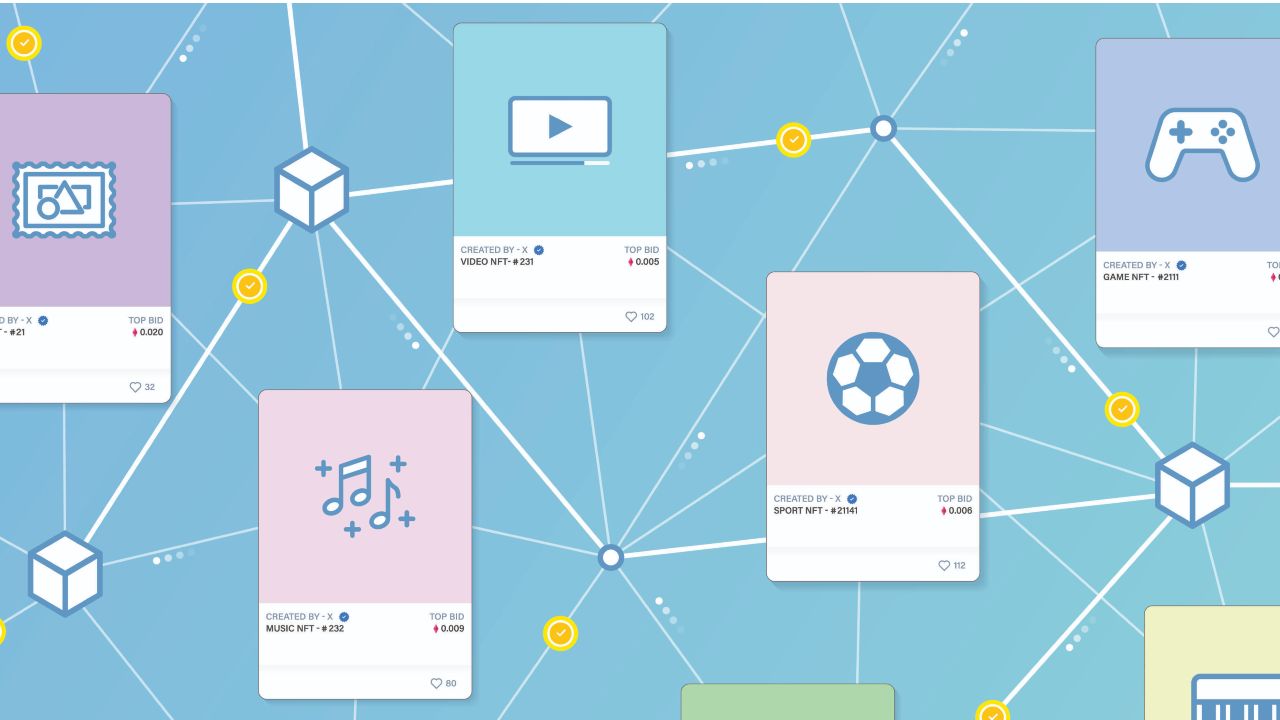Introduction
Welcome to the future of the internet, where the virtual realm is merging with reality, creating a new paradigm known as the WEB3 Metaverse. This transformative concept is revolutionizing the way we interact, communicate, and do business in the digital world. The Metaverse is no longer confined to science fiction; it is rapidly becoming a tangible reality.
The WEB3 Metaverse is an interconnected network of virtual worlds, where users can explore, socialize, create, and trade in a decentralized and immersive environment. It is a convergence of various technologies, including blockchain, virtual reality (VR), augmented reality (AR), artificial intelligence (AI), and more. The Metaverse offers endless possibilities and experiences that go beyond the confines of the physical world.
At its core, the WEB3 Metaverse represents a paradigm shift from the predominantly centralized structure of the current internet to a decentralized and user-centric ecosystem. It empowers individuals to have ownership and control over their digital presence, data, and assets. In the Metaverse, users can create, monetize, and trade virtual goods, services, and experiences, fostering an economy built upon digital scarcity and authenticity.
The WEB3 Metaverse has gained significant attention and interest from technology enthusiasts, investors, and businesses alike. Its potential to reshape industries such as gaming, entertainment, social media, e-commerce, education, and even healthcare is immense. From virtual concerts to immersive gaming experiences, from virtual real estate to digital art, the Metaverse has the potential to transform how we live, work, and interact with one another.
However, the widespread adoption and realization of the WEB3 Metaverse are not without challenges and concerns. Questions regarding privacy, security, inclusivity, and accessibility need to be addressed to ensure the Metaverse benefits everyone. Additionally, there are debates and discussions around the governance and standards of the Metaverse to prevent monopolistic control and promote openness.
In this article, we will explore the core features of the WEB3 Metaverse, delve into the technology that powers it, examine its use cases and applications across various industries, and discuss the challenges and concerns that need to be addressed. Join us on this exciting journey into the future of the internet as we unravel the possibilities and potential of the WEB3 Metaverse.
What is WEB3 Metaverse?
The WEB3 Metaverse is a revolutionary concept that encompasses a virtual universe where users can interact, explore, trade, and create in a decentralized and immersive environment. Unlike the traditional internet, the Metaverse is not limited by physical constraints and allows for seamless integration between virtual and real-world experiences.
At its core, the WEB3 Metaverse is built upon the principles of decentralization, empowering users with ownership and control over their digital assets, identities, and data. It is a user-centric ecosystem that fosters collaboration, creativity, and economic opportunities. In this virtual realm, users can create and monetize virtual goods, services, and experiences, leading to the emergence of a thriving digital economy.
The Metaverse is fueled by a combination of advanced technologies, including blockchain, which serves as the underlying infrastructure for secure transactions, digital scarcity, and transparent governance. Blockchains enable the creation, ownership, and trading of digital assets, ensuring trust and authenticity in the Metaverse.
Additionally, virtual reality (VR), augmented reality (AR), and other immersive technologies play a crucial role in the WEB3 Metaverse. Users can explore virtual worlds, communicate with others, and interact with virtual objects in a way that blurs the line between the physical and virtual realms. These technologies provide a rich and engaging experience that enhances social connections and enables new forms of entertainment and education.
The WEB3 Metaverse is not a single, centralized entity but rather a collection of interconnected platforms, applications, and virtual spaces. Users can seamlessly navigate between different virtual worlds, connecting with others across platforms and devices. This interoperability fosters creativity, collaboration, and shared experiences within the Metaverse.
Overall, the WEB3 Metaverse represents a paradigm shift in how we interact with the digital world. It opens up endless possibilities for users to express themselves, engage in social interactions, conduct business, and explore new frontiers. As technology continues to advance and adoption grows, the Metaverse has the potential to reshape industries, create new economic opportunities, and redefine our relationship with the digital realm.
Core Features of WEB3 Metaverse
The WEB3 Metaverse is characterized by several core features that differentiate it from the traditional internet and contribute to its immersive and decentralized nature. These features are at the heart of the Metaverse ecosystem and enable users to create, interact, and transact in a virtual environment. Let’s explore some of the key features that define the WEB3 Metaverse:
- Decentralization: The WEB3 Metaverse operates on decentralized principles, utilizing blockchain technology to remove intermediaries and enable peer-to-peer interactions. This ensures that control and ownership of digital assets and data reside with the users, fostering transparency, trust, and autonomy.
- Virtual Reality and Immersive Experiences: Virtual reality (VR) and augmented reality (AR) technologies play a central role in the Metaverse, offering users immersive and lifelike experiences. Users can explore virtual worlds, interact with objects, and engage in social interactions as if they were physically present, blurring the line between the real and virtual realms.
- Interoperability and Seamless Integration: The WEB3 Metaverse is not limited to a single platform or application but rather an interconnected web of virtual spaces. Users can seamlessly navigate between different platforms and interact with others across various virtual worlds, fostering collaboration, creativity, and shared experiences.
- Tokenization and Digital Assets: The Metaverse leverages blockchain technology to tokenize digital assets, enabling users to create, own, and trade virtual goods, services, and experiences. These digital assets can be anything from virtual real estate and artwork to in-game items and virtual currencies, providing a thriving digital economy within the Metaverse.
- User-Centric Economy: In the WEB3 Metaverse, users have the opportunity to monetize their creations and talents. They can sell virtual goods, offer services, and even earn income through virtual experiences and events. This user-centric economy empowers individuals and opens up new avenues for entrepreneurship and income generation.
These core features of the WEB3 Metaverse create a dynamic and immersive digital ecosystem where users can engage in meaningful interactions, pursue creative endeavors, and participate in a vibrant digital economy. As the Metaverse continues to evolve and gain traction, we can expect to see even more innovative features and applications that redefine our online experiences.
Decentralization and Blockchain Technology
One of the foundational principles of the WEB3 Metaverse is decentralization, which is enabled by blockchain technology. Decentralization shifts the control and power from centralized entities to the users themselves, promoting transparency, autonomy, and trust within the Metaverse ecosystem.
At its core, blockchain is a distributed ledger that records transactions across multiple computers, known as nodes. This decentralization ensures that no single entity has complete control over the network, and all transactions are validated by consensus among the participating nodes. The use of blockchain in the Metaverse brings several benefits:
1. Trust and Transparency: Blockchain technology eliminates the need for intermediaries, such as centralized authorities or platforms, as every transaction is recorded on an immutable and transparent ledger. This transparency builds trust among users and ensures the authenticity and ownership of digital assets within the Metaverse.
2. Security: The decentralized nature of blockchain technology makes it highly secure. Transactions are encrypted and stored across multiple nodes, making it extremely difficult for malicious actors to alter or manipulate the data. This enhances the security of user data and protects against fraud and hacking attempts.
3. Ownership and Control: In the WEB3 Metaverse, users have full ownership and control over their digital assets. Blockchain technology enables the creation, ownership, and trading of digital assets through smart contracts, which are self-executing contracts with predefined rules. This empowers individuals to monetize their creations and establish their digital presence within the Metaverse.
4. Interoperability: Blockchain technology facilitates interoperability within the Metaverse ecosystem. Different platforms and applications can integrate with each other through blockchain protocols, enabling seamless transfer of digital assets and data. This interoperability fosters collaboration, creativity, and shared experiences within the Metaverse.
5. Community Governance: Blockchain-based Metaverse platforms often employ community-driven governance models. Users can participate in the decision-making process by holding governance tokens and voting on proposals that shape the direction and rules of the Metaverse. This inclusive governance model ensures that decisions are made collectively and in the best interests of the community.
By leveraging decentralized blockchain technology, the WEB3 Metaverse removes the reliance on centralized entities and creates a user-centric environment. It offers users greater control over their digital lives, enhances trust and security, and fosters a vibrant and inclusive digital economy. As the Metaverse continues to evolve, blockchain technology will play a central role in enabling and powering its decentralized infrastructure.
Virtual Reality and Immersive Experiences
Virtual reality (VR) and immersive experiences are key components of the WEB3 Metaverse, offering users a new dimension of interaction and engagement within the digital realm. VR technology creates a simulated environment that replicates real or imagined worlds, while immersive experiences enhance user participation and sensory engagement. Together, they bring the Metaverse to life, blurring the boundaries between physical and virtual reality.
1. Exploration and Presence: VR technology allows users to explore virtual worlds as if they were physically present. Users can navigate through immersive environments, interact with virtual objects, and experience a sense of presence and embodiment. This level of immersion enhances the engagement and realism of the Metaverse, creating a rich and interactive experience.
2. Social Interactions: VR enables users to interact with others in the Metaverse through avatars, bridging the gap between physical distance and fostering social connections in a virtual space. Users can communicate, collaborate, and engage in shared activities, leading to new forms of social interaction and communities within the Metaverse.
3. Enhanced Entertainment: VR technology revolutionizes entertainment in the Metaverse. Users can participate in immersive gaming experiences, watch virtual concerts, attend virtual events, and explore simulated environments that offer unlimited possibilities for entertainment and engagement.
4. Virtual Commerce: With VR, users can experience virtual shopping and commerce. They can virtually try on clothes, visit virtual stores, and interact with virtual storefronts. This opens up new possibilities for e-commerce and provides a more engaging and personalized shopping experience within the Metaverse.
5. Education and Training: VR in the Metaverse has immense potential in education and training. It offers realistic simulations and interactive learning environments that provide hands-on experiences, making education more engaging and effective. VR-based training programs can simulate real-world scenarios, allowing users to acquire practical skills in a safe and controlled environment.
The integration of VR and immersive experiences in the WEB3 Metaverse enhances user engagement, immersion, and interactivity. It enables users to explore new realities, connect with others, and participate in a wide range of activities that go beyond the limitations of the physical world. As VR technology advances and becomes more accessible, the possibilities for immersive experiences within the Metaverse are limitless.
Interoperability and Seamless Integration
Interoperability and seamless integration are crucial aspects of the WEB3 Metaverse, enabling users to navigate between different platforms and virtual worlds with ease. The ability for various components of the Metaverse ecosystem to work together harmoniously creates a cohesive and interconnected virtual experience.
1. Cross-Platform Compatibility: Interoperability enables users to access and interact with the Metaverse across multiple devices and platforms. Whether using a VR headset, a smartphone, or a computer, users can seamlessly transition between different devices and platforms while maintaining a consistent user experience. This cross-platform compatibility ensures that users can access the Metaverse regardless of their preferred device or technology
2. Seamless Transfer of Digital Assets: Interoperability allows for the seamless transfer of digital assets between different platforms and virtual worlds. Users can trade virtual goods, currencies, and other assets without the need for complicated conversion processes or restrictions. This fluid transfer of assets fosters an open and vibrant digital economy within the Metaverse.
3. Shared Identities and Avatars: Interoperability enables users to have a unified identity and avatar across multiple platforms and virtual worlds. This means that users can maintain their digital identity, social connections, and personalized avatars as they navigate through different experiences and interact with others. This shared identity creates a sense of continuity and familiarity within the Metaverse.
4. Collaborative Experiences: Interoperability facilitates collaboration and shared experiences within the Metaverse. Users from different platforms and virtual worlds can come together to participate in events, activities, and projects. This collaborative environment fosters creativity, innovation, and social interactions, allowing users to connect and work together across boundaries.
5. Cross-Platform Economy: Interoperability extends to the digital economy within the Metaverse. Users can seamlessly transact and trade virtual goods, services, and currencies across different platforms and ecosystems. This cross-platform economy allows for a greater diversity of offerings and opportunities for users to monetize their creations and participate in economic activities.
Interoperability and seamless integration within the WEB3 Metaverse enhance user experiences, foster collaboration, and facilitate the growth of a vibrant and interconnected virtual ecosystem. As the Metaverse evolves, ensuring interoperability among different platforms and applications will be essential in creating a unified and inclusive digital space.
Tokenization and Digital Assets
Tokenization and digital assets are fundamental aspects of the WEB3 Metaverse, revolutionizing how value is created, traded, and owned within the virtual realm. Tokenization involves the representation of real-world or virtual assets as digital tokens on the blockchain, enabling users to have ownership and control over their digital assets within the Metaverse.
1. Digital Ownership and Authenticity: Tokenization allows for the creation of unique and provably scarce digital assets within the Metaverse. These assets can range from virtual real estate and artwork to in-game items and virtual currencies. By tokenizing these assets, users can establish ownership and ensure their authenticity, providing a secure and transparent way to trade and prove the value of their digital holdings.
2. Decentralized Marketplaces: Tokenization of digital assets enables the emergence of decentralized marketplaces within the Metaverse. Users can buy, sell, and trade their digital assets directly with others, without the need for intermediaries or centralized platforms. These decentralized marketplaces promote peer-to-peer transactions, fostering a vibrant and open digital economy.
3. Monetization Opportunities: Tokenization empowers creators and users within the Metaverse to monetize their talents, skills, and creations. Artists can tokenize their digital artwork and sell it as limited editions, gamers can trade in-game items for real-world value, and content creators can tokenize their digital content and earn royalties from its usage. This opens up new avenues for income generation and entrepreneurship within the Metaverse.
4. Interoperability and Liquid Markets: Tokenization enables the seamless transfer of digital assets between different platforms and ecosystems within the Metaverse. This interoperability fosters a liquid market where users can easily move their assets and transact across various virtual worlds and applications. It also allows for the integration of different blockchain protocols, expanding the pool of potential participants in the digital asset market.
5. Programmable and Automated Transactions: Digital assets on the blockchain can be programmed with smart contracts, which are self-executing contracts with predefined rules. This automates transactions, enabling digital assets to be traded, shared, and utilized based on predefined conditions. Smart contracts bring efficiency, transparency, and security to the trading and utilization of digital assets within the Metaverse.
The tokenization of digital assets creates a new paradigm in which users can establish ownership, trade, and monetize their creations within the Metaverse. It fosters a dynamic and decentralized digital economy, where users have more control over their assets and a greater range of opportunities for value creation. As the Metaverse continues to develop, tokenization will play a pivotal role in shaping the future of digital assets and economic activity within this virtual realm.
Use Cases and Applications of WEB3 Metaverse
The WEB3 Metaverse has a wide range of use cases and applications that span across various industries, transforming how we live, work, and interact within the digital realm. As the Metaverse continues to evolve and expand, let’s explore some of its prominent use cases:
1. Gaming and Entertainment: The gaming industry is one of the early adopters of the Metaverse concept. In the Metaverse, gaming experiences become more immersive and interactive, blurring the boundaries between the real and virtual worlds. Users can engage in virtual reality (VR) gaming experiences, trade in-game items, and participate in virtual events such as tournaments and concerts.
2. Social Networking and Communication: The Metaverse brings social networking and communication to a new level. Users can connect and interact with friends, family, and like-minded individuals in virtual spaces, through avatars and real-time communication. The Metaverse enhances social interactions, fostering communities and shared experiences across borders and time zones.
3. Virtual Real Estate and Architecture: Virtual real estate is a burgeoning sector in the Metaverse. Users can buy, sell, and develop virtual land and properties, creating virtual cities, buildings, and architectural designs. Virtual real estate opens up opportunities for virtual businesses, virtual tourism, and creative architectural endeavors.
4. Education and Training: The Metaverse has immense potential in education and training. It provides immersive and interactive learning environments, allowing users to acquire knowledge and skills through practical experiences. Virtual classrooms, simulations, and training programs offer a flexible and engaging approach to education and professional development.
5. Virtual Commerce and Retail: E-commerce expands into the Metaverse, allowing users to buy and sell virtual products, digital artwork, fashion items, and more. Virtual storefronts, virtual shopping experiences, and personalized virtual fitting rooms provide a unique and engaging way to shop in the digital realm.
6. Healthcare and Therapy: The Metaverse offers opportunities for healthcare providers and therapists to deliver virtual healthcare services and treatments. Virtual reality (VR) therapies, remote consultations, and virtual support groups enhance accessibility and provide innovative solutions for mental health, physical rehabilitation, and medical training.
7. Virtual Events and Conferences: The Metaverse enables the hosting of virtual events, conferences, and exhibitions. Users can attend interactive virtual conferences, network with industry professionals, and participate in virtual trade shows and workshops. Virtual events provide a cost-effective and environmentally friendly alternative to physical gatherings.
These are just a few of the many use cases and applications of the WEB3 Metaverse. As the technology and adoption of the Metaverse continue to advance, we can expect innovative and transformative applications in various industries, shaping the way we interact, work, learn, and experience the digital world.
Impact on Various Industries
The WEB3 Metaverse has the potential to revolutionize various industries, transforming the way businesses operate, engage with customers, and deliver products and services. Let’s explore the impact of the Metaverse on some key industries:
1. Gaming and Entertainment: The gaming and entertainment industry is on the forefront of embracing the Metaverse. The immersive and interactive nature of the Metaverse enhances gaming experiences, allowing for more realistic and engaging gameplay. Virtual reality (VR) gaming experiences, virtual concerts, and interactive storytelling are just a few examples of how the Metaverse is reshaping the entertainment landscape.
2. Retail and E-commerce: The Metaverse presents new opportunities for retailers and e-commerce businesses. Virtual stores, personalized virtual shopping experiences, and virtual product demonstrations allow customers to explore and purchase products in a more interactive and engaging manner. The Metaverse also enables the creation of virtual marketplaces where users can buy and sell virtual goods, digital art, and other digital assets.
3. Social Networking and Communication: The Metaverse enhances social networking and communication, transcending geographical limitations. Users can connect and interact with others in virtual spaces, fostering social connections and shared experiences. Virtual conferences, 3D avatars, and interactive communication tools within the Metaverse open up new avenues for collaboration, networking, and community-building.
4. Education and Training: The Metaverse has significant implications for education and training. Virtual classrooms, immersive learning experiences, and interactive simulations allow for more engaging and personalized education. Training programs can leverage the Metaverse to create realistic and immersive environments for hands-on training in diverse fields, such as healthcare, aviation, and engineering.
5. Real Estate and Architecture: Virtual real estate is an emerging sector within the Metaverse. Users can buy, sell, and develop virtual properties, creating virtual cities, buildings, and architectural designs. The Metaverse offers architects and real estate developers a platform to showcase their designs, collaborate on projects, and simulate real-world scenarios before construction begins.
6. Healthcare and Therapy: The Metaverse has potential applications in healthcare and therapy. Virtual reality (VR) therapies, remote consultations, and virtual support groups offer new ways to provide healthcare services and mental health treatments. The Metaverse can also facilitate medical training and simulations, allowing healthcare professionals to practice procedures in a safe and controlled environment.
7. Advertising and Marketing: The Metaverse opens up innovative possibilities for advertising and marketing. Brands can create immersive and interactive experiences to engage with customers in virtual spaces. Sponsored events, branded virtual items, and virtual experiences enable targeted advertising and direct customer engagement within the Metaverse.
The impact of the WEB3 Metaverse extends beyond these industries, as it permeates various aspects of our lives. As the Metaverse continues to evolve, its transformative effects will be evident across a wide range of industries, reshaping business models, enhancing customer experiences, and fostering innovation.
Challenges and Concerns
While the WEB3 Metaverse holds immense potential, it also faces various challenges and concerns that need to be addressed for its widespread adoption and sustainable growth. Let’s explore some of the key challenges and concerns surrounding the Metaverse:
1. Accessibility and Inclusivity: One of the primary concerns is the accessibility and inclusivity of the Metaverse. As the technology advances, ensuring that the Metaverse is accessible to individuals with disabilities, people from diverse backgrounds, and those with limited resources is essential. Efforts should be made to bridge the digital divide and make the Metaverse a space that is welcoming and accessible to all.
2. Privacy and Data Protection: With increased digital interactions and ownership of personal data within the Metaverse, privacy and data protection become significant concerns. Safeguarding user data, implementing robust data privacy policies, and empowering users to have control over their personal information are crucial for building trust within the Metaverse ecosystem.
3. Security and Trust: As the Metaverse becomes more complex and interconnected, ensuring the security and trustworthiness of the platform is paramount. Implementing robust security measures to protect against hacking, fraud, and data breaches is crucial. Additionally, building trust among users, particularly in peer-to-peer transactions and interactions, is essential for the sustainable growth of the Metaverse.
4. Governance and Regulation: The decentralized nature of the Metaverse presents governance and regulatory challenges. Determining clear guidelines and standards for digital asset ownership, intellectual property rights, and user interactions within the Metaverse is essential. Collaborative efforts between industry stakeholders, policymakers, and regulatory authorities are needed to establish a framework that fosters innovation while maintaining consumer protection and fairness.
5. Ethical Considerations: The Metaverse raises ethical considerations regarding the use of technology and its impact on society. Ethical considerations include issues such as virtual addiction, the impact on mental health, the potential for virtual crimes, and the preservation of cultural heritage in virtual environments. These considerations require ongoing dialogue and ethical guidelines to ensure responsible development and usage of the Metaverse.
6. Energy Consumption: The energy consumption associated with running the Metaverse, particularly in relation to resource-intensive activities such as mining and rendering complex virtual environments, is a concern. It is crucial to develop sustainable approaches, such as utilizing renewable energy sources and optimizing resource usage, to minimize the environmental impact of the Metaverse.
7. Digital Divide and Exclusion: As the Metaverse evolves, there is a risk of exacerbating existing digital divides and exclusionary practices. Ensuring equal access to technology, connectivity, and resources is essential to prevent the creation of new forms of inequality within the Metaverse. Efforts should be made to bridge the gap, provide education and support, and address the barriers that may prevent certain populations from fully participating in the Metaverse.
Addressing these challenges and concerns requires a collaborative effort from all stakeholders involved in shaping the Metaverse’s future. By actively addressing these issues, the Metaverse can create an inclusive, secure, and sustainable digital environment that benefits individuals and society as a whole.
Conclusion
The WEB3 Metaverse represents the future of the internet, where the boundaries between the real and virtual worlds blur, and new possibilities emerge. With its core features of decentralization, virtual reality, tokenization, and interoperability, the Metaverse is reshaping industries, transforming how we interact, and creating new opportunities for economic growth and innovation.
While the potential of the Metaverse is exciting, it also brings challenges and concerns that need to be addressed. Accessibility, privacy, security, governance, and ethical considerations must be carefully navigated to ensure an inclusive and responsible Metaverse. It is essential to prioritize user empowerment, data protection, and regulatory frameworks that foster innovation while safeguarding the rights and well-being of users.
The impact of the Metaverse extends beyond gaming and entertainment. It reaches industries such as retail, education, healthcare, and real estate, offering new avenues for engagement, communication, and value creation. Whether it is virtual experiences, virtual commerce, or virtual learning, the Metaverse has the potential to revolutionize how we live, work, and socialize in the digital world.
However, as the Metaverse grows, it is crucial to mitigate any potential negative impacts. Efforts to bridge the digital divide, address inclusion and accessibility challenges, and reduce environmental footprints should be at the forefront of Metaverse development. By fostering collaboration, innovation, and responsible practices, the Metaverse has the potential to create a more connected, equitable, and immersive digital future.
The journey into the WEB3 Metaverse is just beginning. As technology continues to advance and adoption grows, there is still much to explore, discover, and shape. By addressing the challenges, embracing the opportunities, and empowering users, we can collectively create a vibrant and sustainable Metaverse that enhances our lives, fosters human connection, and unlocks new frontiers of digital experiences.
























